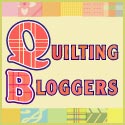The Stitch:
So, you have the top thread and then you have the bottom thread, and in the stitching process the 2 threads become looped around each other and make a stitch. The whole process is quite interesting. The needle goes into the fabric and down past the needle plate and when it gets down there the "hook" on the bobbin assembly catches the upper thead and takes it around the bobbin and it becomes looped around the bottom thread on it's way around and back up and a STITCH is born! That happens every time your needle goes down and for every stitch in your project. Now you know why it's so important to take care of your machine! It works hard for you.




So I've been sewing for over 30 years ( I learned to sew when I was 6 months old!) and didn't know how my machine worked until about 6 years ago. I think it's pretty cool!






 Most newer machines no longer need oiling. I'm not sure how they do that, but that's what the manufacturers claim. Older machines, like the Bernina 830 that I learned on as a kid, have certain spots that need oiling on a regular basis. Just like your car, they run better when they're oiled!
Most newer machines no longer need oiling. I'm not sure how they do that, but that's what the manufacturers claim. Older machines, like the Bernina 830 that I learned on as a kid, have certain spots that need oiling on a regular basis. Just like your car, they run better when they're oiled!
.JPG)
.JPG) The Teapots came from the LQS and the cherries from WalMart. Yep the background on the cherries used to be black!
The Teapots came from the LQS and the cherries from WalMart. Yep the background on the cherries used to be black!.JPG)










